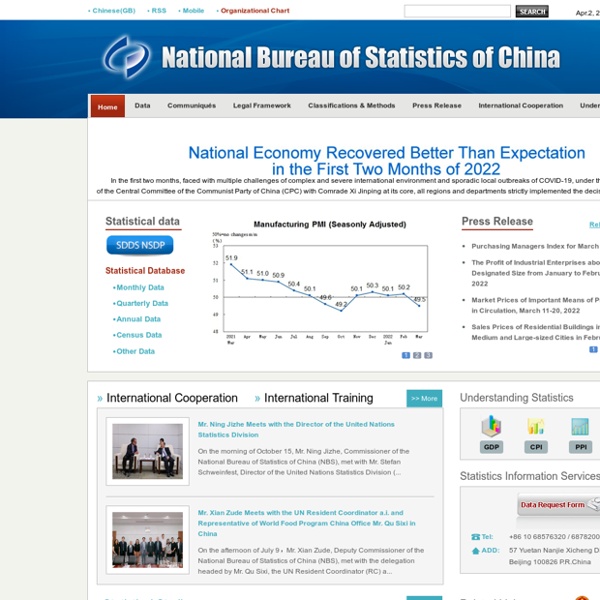



China - Economy, Finance and Trade - Passport/Euromonitor China-Australia Free Trade Agreement: Pros and cons Updated 21 Oct 2015, 12:33amWed 21 Oct 2015, 12:33am There are pros and cons of the Federal Government's free trade deal with China. We look at the potential benefits, which groups have missed out, and areas in which some analysts and fair trade campaigners say Australia will be worse off. Potential benefits for Australia: Potential negatives for Australia: Topics: trade, agribusiness, international-aid-and-trade, business-economics-and-finance, australia, china Harvard Business Review Sign in with your Google Account Find my account Forgot password? Sign in with a different account Create account One Google Account for everything Google China - Country profile i Passport/Euromonitor
The World Factbook ShowIntroduction :: CHINA Panel - Collapsed For centuries China stood as a leading civilization, outpacing the rest of the world in the arts and sciences, but in the 19th and early 20th centuries, the country was beset by civil unrest, major famines, military defeats, and foreign occupation. After World War II, the Communist Party of China under MAO Zedong established an autocratic socialist system that, while ensuring China's sovereignty, imposed strict controls over everyday life and cost the lives of tens of millions of people. After 1978, MAO's successor DENG Xiaoping and other leaders focused on market-oriented economic development and by 2000 output had quadrupled. For much of the population, living standards have improved dramatically but political controls remain tight. Population Pyramid A population pyramid illustrates the age and sex structure of a country's population and may provide insights about political and social stability, as well as economic development.
Works of Mao Zedong by Date Works of Mao Zedong by Date Early | 1920 | 1930 | 1940 | 1950 | 1960 | 1970 Early Works A Study of Physical Education (April 1917) An Explanation of Physical Education The Place of Physical Education in our Life Previous Abuses of Physical Education and My Method for Remedying them The Utility of Physical Education The Reasons for Disliking Exercise The Methods of Exercise Should be Few The Points to Which we must Pay Attention When we Exercise To Hakuro Toten (Miyazaki Toten) (Apri1 1917) To the Glory of the Hans (July & August 1919) Toward A New Golden Age The Great Union of the Popular Masses Miss Chao's Suicide (1919) The First Revolutionary Civil War Period Communism and Dictatorship (November 1920. The Role of the Merchants in the National Revolution (July 11, 1923) The Chinese Government and the Foreigners (August 29, 1923) Analysis of the Classes in Chinese Society (March 1926) Report on an Investigation of the Peasant Movement In Hunan (March 1927) The Second Revolutionary Civil War Period
People's Republic of China and the IMF Resident Representative for Peoples Republic of China Alfred Schipke Senior Resident Representative of China Office Information Room 1806, East Tower, Twin TowersNo. Email: RR-CHN@IMF.ORG Tel: +86 10 6505 1155 Fax: +86 10 6505 8580 Alfred Schipke, Senior Resident Representative of China Alfred Schipke, is the IMF Senior Resident Representative for China. Zhang Longmei, Deputy Resident Representative of China Longmei Zhang, is the IMF Deputy Resident Representative for China.
Reference Archive: Mao Zedong Marxists Internet Archive: Mao Zedong Note on spelling and transliteration BiographyAll Works by DateSelected Works by VolumeWorks in PDF PoetryImages Note on spelling and transliteration: MIA generally uses the Pinyin transliteration (i.e. The Deng Xiaoping Reference Archive Documents Biography Speech By Chairman of the Delegation of the People’s Republic of China, Deng Xiaoping, At the Special Session of the U.N. Links Selected Works of Deng Xiaoping (Off Site) Stefan Landsberger's Chinese Propaganda Poster Pages: Deng Xiaoping (Off Site) Maoist Reference Archives Lin Piao Reference Archive Liu Shaoqi Reference Archive Mao Zedong Reference Archive Zhou Enlai Reference Archive
Deng's June 9 Speech: 'We Faced a Rebellious Clique' and 'Dregs of Society' The P.L.A. losses were great, but this enabled us to win the support of the people and made those who can't tell right from wrong change their viewpoint. They can see what kind of people the P.L.A. are, whether there was bloodshed at Tiananmen, and who were those that shed blood. Once this question is made clear, we can take the initiative. Although it is very saddening that so many comrades were sacrificed, if the event is analysed objectively, people cannot but recognize that the P.L.A. are the sons and brothers of the people. In a word, this was a test, and we passed. When I talked about passing muster, I was referring to the fact that the army is still the People's Army. At the same time, we should never forget how cruel our enemies are. The outbreak of the rebellion is worth thinking about. The first question is: Are the line, goals and policies laid down by the Third Plenum of the 11th Central Committee, including our ''three-step'' development strategy, correct?